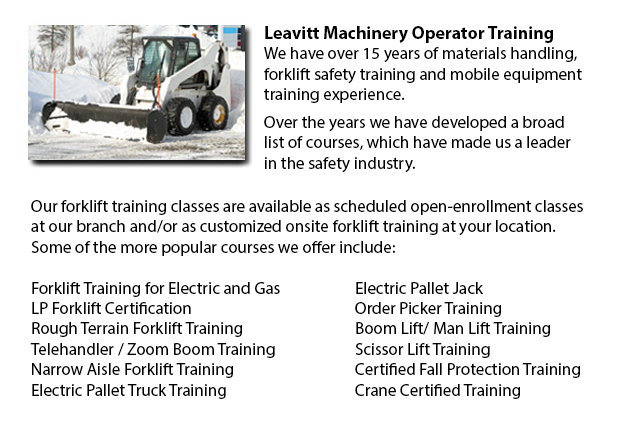
Toronto Skid Steer Ticket - The lift arms on the skid-steer loader are situated beside the driver together with pivots at the rear of the driver's shoulders. These features makes the skid-steer loader different compared to the conventional front loader. Because of the operator's nearness to moving booms, early skid loaders were not as safe as traditional front loaders, specially through the operator's entry and exit. Today's' modern skid-steer loaders have numerous features so as to protect the driver including fully-enclosed cabs. Similar to several front loaders, the skid-steer model could push materials from one location to another, can load material into a truck or trailer and could carry material in its bucket.
Operation
More often than not a skid-steer loader is able to be utilized on a jobsite rather than a large excavator by digging a hole from the inside. To begin with, the skid-steer loader digs a ramp leading to the edge of the desired excavation, and after that it utilizes the ramp to excavate material out of the hole. As the excavation deepens, the machine reshapes the ramp making it longer and steeper. This is a remarkably functional way for digging underneath a structure where there is not enough overhead clearance for the boom of a large excavator. For instance, this is a common situation when digging a basement underneath an existing building or home.
The skid-steer loader attachments add much flexibility to the machine. Like for example, conventional buckets on the loaders can be replaced accessories powered by their hydraulics including pallet forks, backhoes, tree spades, sweepers, mowers, snow blades and cement mixers. Some other popular specialized buckets and attachments consist of wood chipper machines, grapples, tillers, stump grinder rippers, wheel saws, snow blades, trenchers, angle booms and dumping hoppers.
History
The 3-wheeled front end loader was invented during the year 1957, by Louis and Cyril Keller in their hometown of Rothsay, in the state of Minnesota. The Keller brothers made this machine in order to help mechanize the method of cleaning in turkey barns. This machine was light and compact and included a rear caster wheel that allowed it to turn around and maneuver within its own length, allowing it to carry out the same tasks as a traditional front-end loader.
In the year 1958, the Melroe brothers of Melroe Manufacturing Company in Gwinner, N.D. obtained the rights to the Keller loader. They hired the Keller brothers to continue refining their loader invention. The M-200 Melroe was actually the outcome of this partnership. This model was a self-propelled loader that was launched to the market during nineteen fifty eight. The M-200 Melroe featured a a 750 lb capacity, two independent front drive wheels, a rear caster wheel and a 12,9 HP engine. By 1960, they replaced the caster wheel with a rear axle and launched the very first 4 wheel skid steer loader that was known as the M-400.
The term "Bobcat" is utilized as a generic term for skid-steer loaders. The M-400 shortly after became the Melroe Bobcat. The M-440 version has rated operating capacity of 1100 lbs powered by a 15.5 HP engine. The business continued the skid-steer development into the mid 1960s and introduced the M600 loader.
-
Toronto Wheel Loader Training
Toronto Wheel Loader Training - Normally, the different kinds of heavy equipment training are classed into 2 categories of machinery: those that have rubber tires and tracked vehicles. Tracked vehicles consist of items like for example excavators, cr... More -
Toronto Heavy Equipment Operator Training
Toronto Heavy Equipment Operator Training - Heavy equipment operator training facilities that provide good standards in the business, providing field performance tasks and added machinery training are really sought after training features. Students a... More -
Toronto Manlift Operator Certification
Toronto Manlift Operator Certification - We provide an aerial lift and scissor platform certification and training to empower the trainee with the general understanding and knowledge of the safe and efficient use of "Power Operated Mobile Work Platfo... More -
Toronto Aerial Boom Lift Ticket
Toronto Aerial Boom Lift Ticket - Aerial lifts can be utilized to accomplish a lot of unique duties done in hard to reach aerial spaces. Some of the odd jobs associated with this type of jack include performing regular preservation on structures with... More -
Toronto Heavy Equipment License
Toronto Heavy Equipment License - Obtaining a heavy equipment license is mandatory in order to operate these big industrial machinery. Certification could be acquired through a vocational school or private training. The license would enable the drive... More -
Skid Steer Loader Training in Toronto
A skid-steer loader is an engine powered equipment which consists of a small and rigid frame. It is outfitted together with lift arms that are utilized to connect to a large variety of labor saving tools and attachments. Typically, skid-steer loaders... More -
Toronto Aerial Lift Certification
Toronto Aerial Lift Certification - Aerial Lift Certification is for individuals who requires an in-depth understanding of aerial lift safety. Inspectors and operators, supervisors, maintenance workers and construction craftsmen should perform a cert... More -
Toronto Boom Lift Training
Toronto Boom Lift Training - Elevated work platforms, also called aerial platforms, allow workers to carry out tasks at heights which would otherwise be not reachable. There are different kinds of lifts intended for various site conditions and applic... More

Forklift Certification Toronto
TOLL FREE: 1-888-254-6157
Toronto, Ontario
forkliftcertificationtoronto.com
Email Us
About Us


